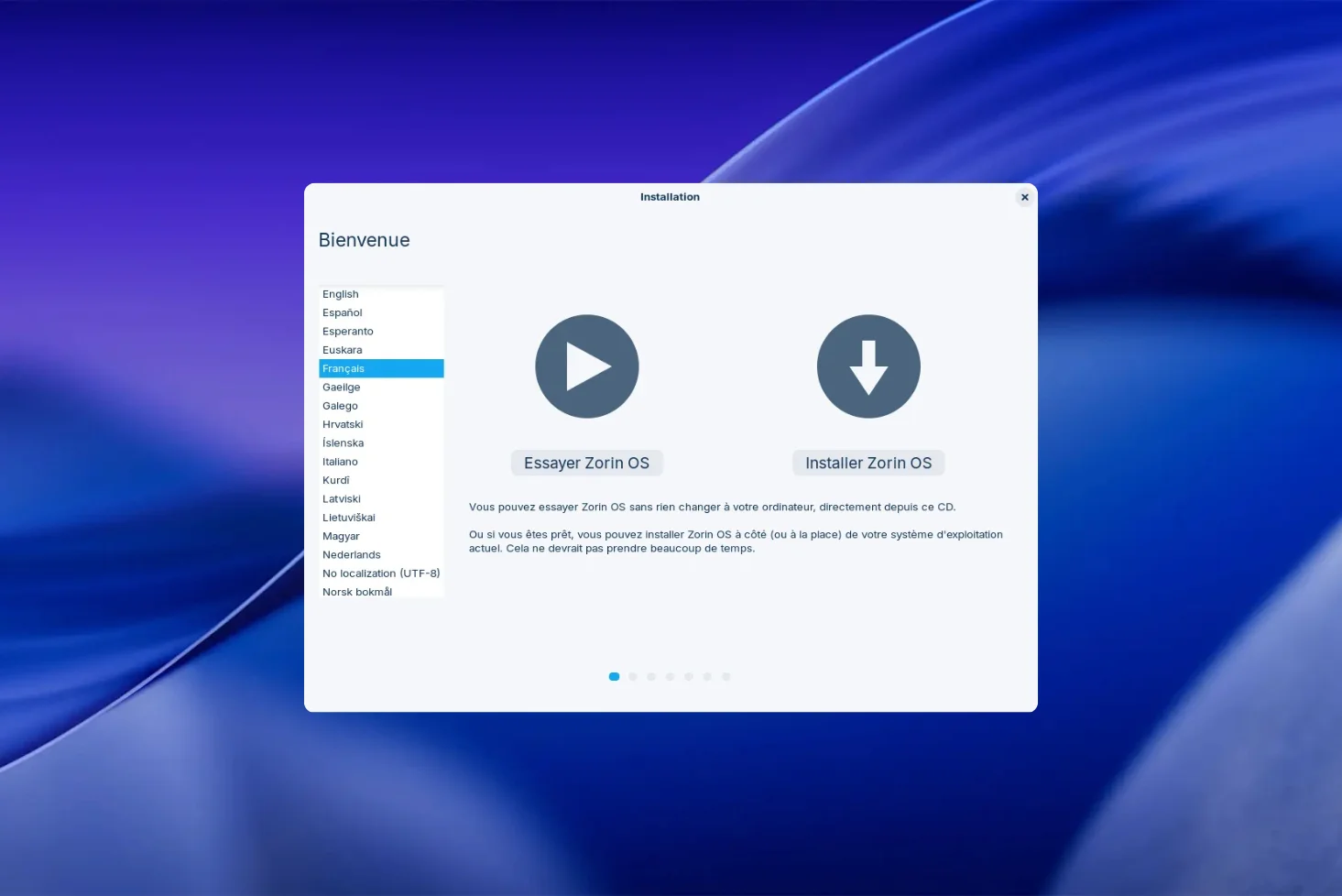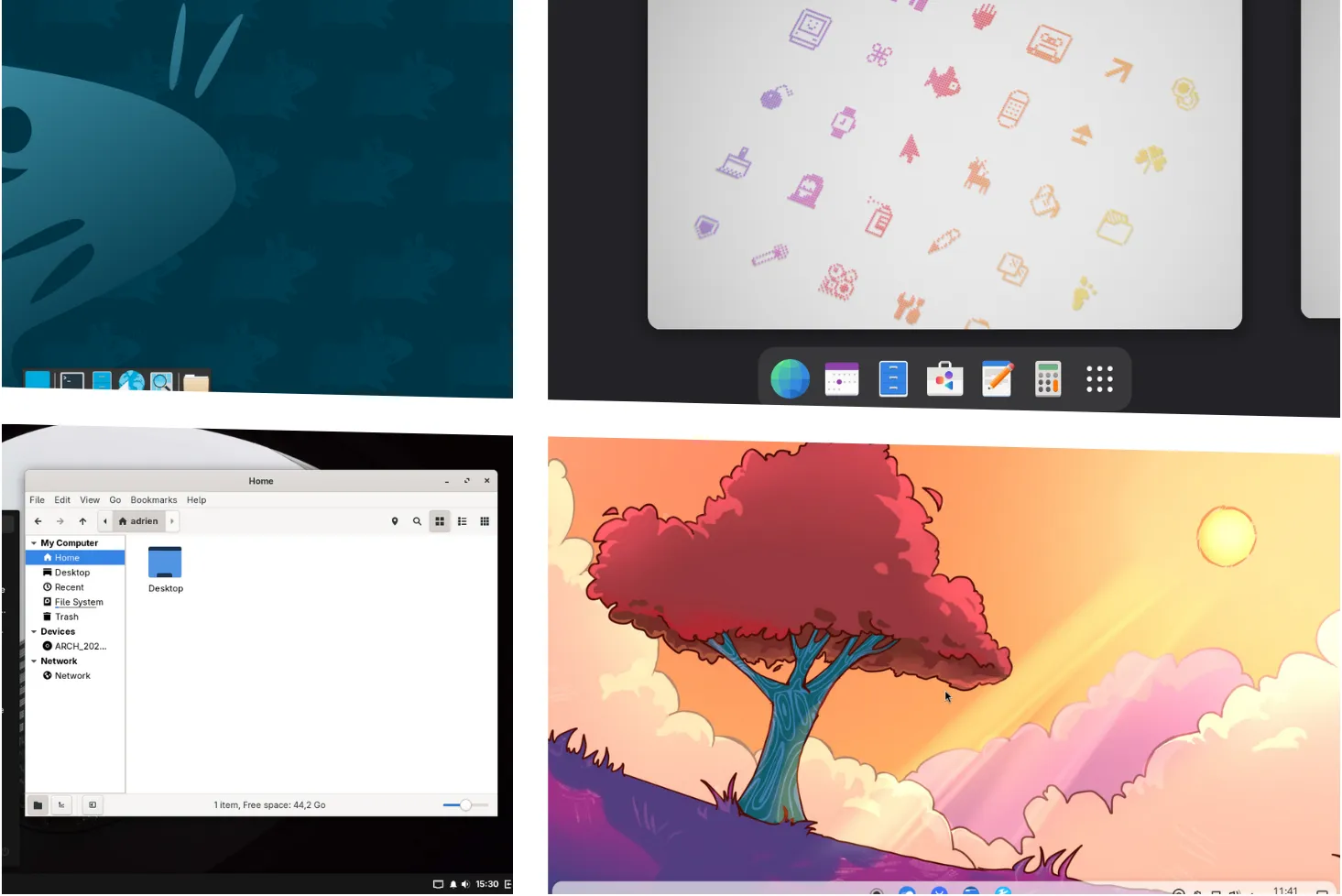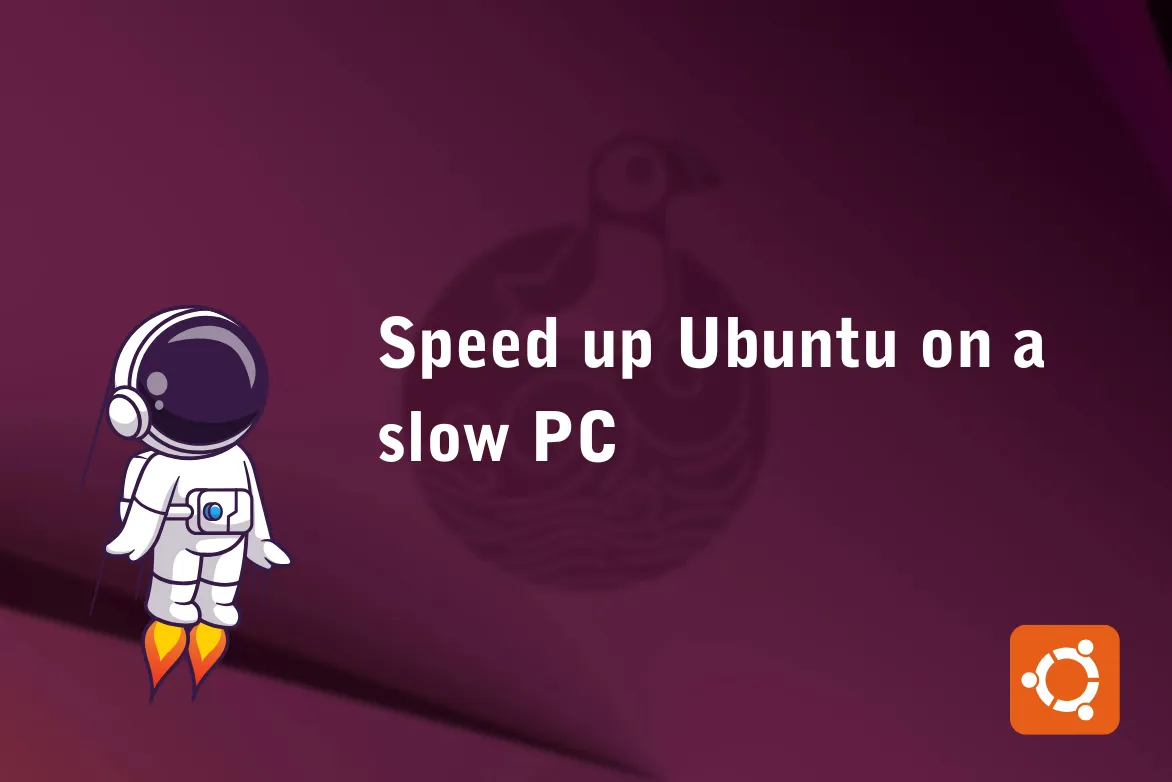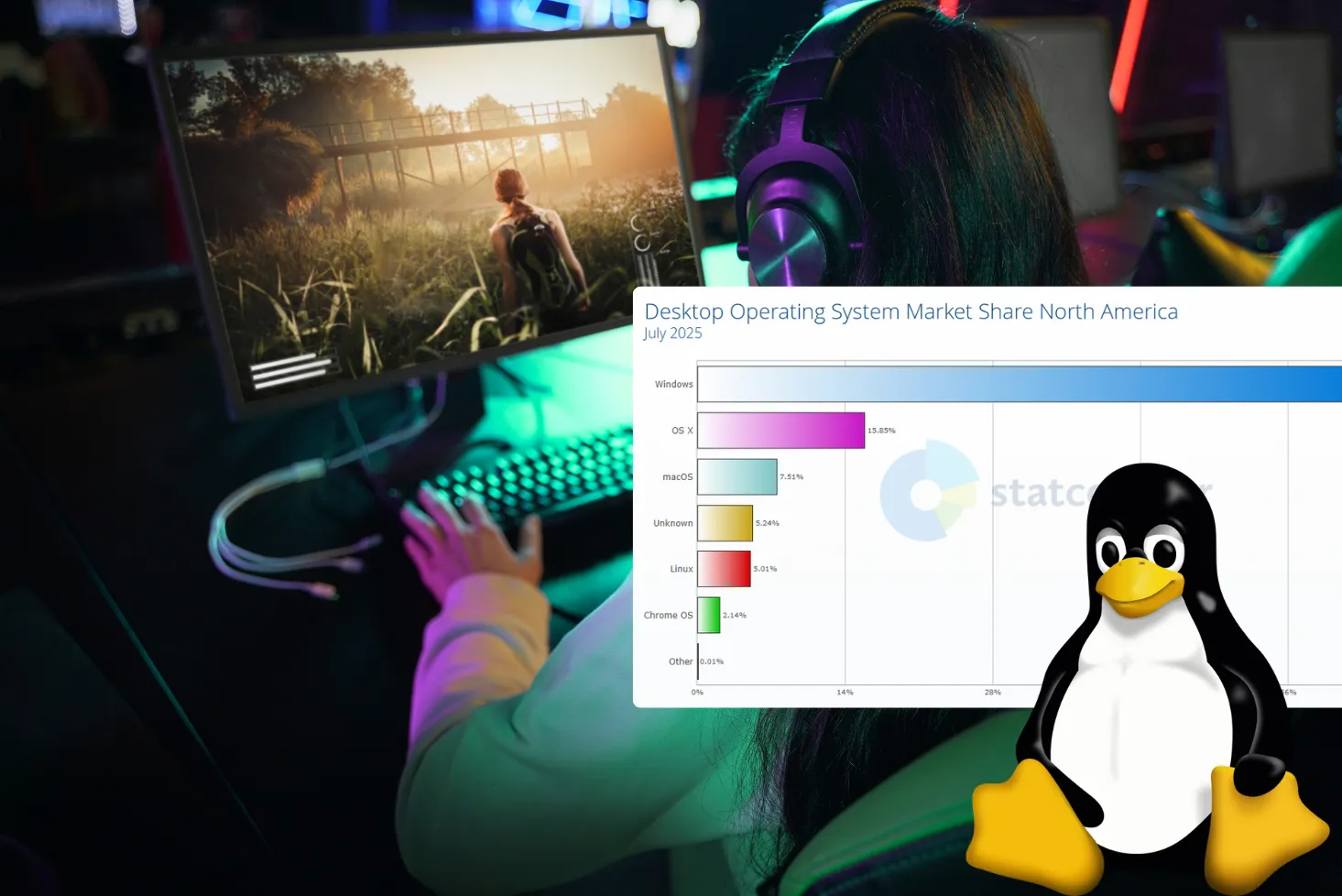Choosing a Linux distribution for a server is never trivial. Behind names like Debian, Ubuntu, AlmaLinux or Rocky Linux lie very different philosophies, update cycles and levels of stability. In 2025, at a time when reliability, security and long-term maintenance are more crucial than ever, this guide will help you make the right choice for your needs.
- Top 8 stable Linux distributions for server
- Alma Linux: stable, free RHEL server distribution
- Rocky Linux: a stable OS for mission-critical environments
- Ubuntu Server: the most popular Linux distribution for servers
- Debian: the most reliable Linux distribution for servers
- openSUSE Leap: SUSE stability in open source
- Oracle Linux: the power of RHEL with Oracle support
- Distributions to avoid on a production server
Top 8 stable Linux distributions for server
Before going into detail about each distribution individually, here’s a summary of the most important criteria for production use. This table enables you to quickly compare the stability, support life and security update policy of each system.
Before installing a distribution on a server, there are three key factors to consider:
- Production stability: essential to avoid breakdowns or unexpected behavior.
- Support duration: the longer it is, the fewer migrations you’ll have to manage.
- Security updates: their speed and reliability guarantee system resilience.
| Distribution | Prod. stability | LTS support | Security updates |
|---|---|---|---|
| AlmaLinux | Very high | 10 years | Fast and stable |
| Rocky Linux | Very high | ~10 years | Fast and stable |
| Ubuntu Server | High (LTS) | 5 to 10 years | Highly responsive |
| Debian Stable | Excellent | 5 years old | Very stable |
| openSUSE Leap | High | ~18 months/version | Regular |
Also discover the best operating systems for old PCs.
Alma Linux: stable, free RHEL server distribution
AlmaLinux is a free, open source Linux distribution designed to offer a stable, compatible and long-term alternative to Red Hat Enterprise Linux (RHEL). Created in response to the end of support for classic CentOS Linux, AlmaLinux faithfully reproduces RHEL binaries, guaranteeing total compatibility with the Red Hat ecosystem, without the associated licensing costs.

It stands out for its clearly professional orientation: extended security support over 10 years, controlled update rate, and open governance via the AlmaLinux OS Foundation. Its robust architecture makes it a strategic choice for enterprises, hosting providers and institutions looking for a reliable foundation for their production servers, even in mission-critical environments.
AlmaLinux is particularly recommended for infrastructures that have historically depended on CentOS. Whether you need to host a high-traffic site, deploy a customized cloud solution or simply guarantee interoperability with RHEL-certified software, AlmaLinux offers uncompromising continuity.
Rocky Linux: a stable OS for mission-critical environments
Rocky Linux is an enterprise Linux distribution designed to be an open, stable and future-proof alternative to Red Hat Enterprise Linux (RHEL). It shares the same goal as AlmaLinux: to provide 100% binary compatibility with RHEL. The project was launched by CentOS co-founder Gregory Kurtzer, with the clear intention of restoring the community spirit of CentOS after its refocusing as CentOS Stream.
Rocky Linux is distinguished by its community-centered governance, structured around the Rocky Enterprise Software Foundation. This approach guarantees long-term independence from any commercial entity, a crucial point for companies and institutions concerned with neutrality. Each major release faithfully follows the RHEL cycle, with rigorously maintained security updates.

This system is particularly well-suited to mission-critical environments such as high-performance computing (HPC) clusters, scientific infrastructures, government systems and high-availability enterprise servers. Its reliability, combined with maximum compatibility with professional software, makes it the solution of choice for demanding deployments.
Ubuntu Server: the most popular Linux distribution for servers
Ubuntu Server LTS is one of the most popular Linux distributions for servers, particularly in cloud environments. Offered by Canonical, it benefits from a long-term support cycle (5 years basic, extendable to 10 years) and a modern software ecosystem, making it a benchmark for rapid, automated and scalable deployments.

It stands out for its ease of use, exhaustive documentation and immediate compatibility with current technologies such as Docker, LXD, Snap, Netplan and cloud-init. The official repositories are rich, regularly updated and tailored to the needs of developers and system administrators alike. Numerous automation and monitoring tools are natively available.
Ideal for web, DevOps, SaaS or private cloud projects, Ubuntu Server LTS is often the first distribution offered on platforms like AWS, Azure or OVHcloud. Its popularity also makes it an excellent choice for starting out in server administration, while remaining perfectly adapted to the requirements of professional infrastructures.
Debian: the most reliable Linux distribution for servers
Debian Stable is renowned for its legendary stability and is one of the most reliable Linux distributions for server environments. Thanks to a rigorous validation process, each stable release benefits from proven packages, making it a solid, minimalist foundation, ideal for infrastructures where reliability takes precedence over novelty.
Debian favors a sober approach: no unnecessary overlay, no imposed choice, and a highly customizable system. It’s ideal for administrators seeking total control over their environment, without having to rely on company-specific tools or commercial distributions. Its long lifecycle (around 5 years, with LTS support) means that servers can be kept running for years without major downtime.

It’s the solution of choice for lightweight servers, appliances, or mission-critical systems requiring few frequent updates. Whether for a mail server, file server or internal web service, Debian Stable offers an extremely robust foundation, with a minimal system footprint and abundant documentation.
openSUSE Leap: SUSE stability in open source
openSUSE Leap is a Linux distribution derived directly from SUSE Linux Enterprise Server (SLES), from which it shares the source code and a large proportion of the packages. It thus offers the robustness of an enterprise system, while remaining freely accessible. This close link with SLES guarantees excellent stability, making it a serious solution for demanding business environments.

Its main asset is the YaST tool, a powerful, centralized administration interface, available in both graphical and command-line modes. YaST enables in-depth configuration of all aspects of the system (network, firewall, services, partitions, etc.), making it a particularly popular distribution for complex or highly customized configurations.
openSUSE Leap is frequently used in industrial, institutional and SAP contexts, particularly in German-speaking countries where SUSE has a long history. It is ideally suited to critical infrastructures, industrial SMEs and organizations looking for a balance between flexibility, reliability and advanced administration tools.
Oracle Linux: the power of RHEL with Oracle support
Oracle Linux is an enterprise Linux distribution fully compatible with Red Hat Enterprise Linux (RHEL), offered free of charge by Oracle. It features the Unbreakable Enterprise Kernel (UEK), a kernel optimized for performance, particularly on heavy workloads, databases and virtualized environments. The aim is to deliver a robust, high-performance system ready for large-scale production.
One of its major assets is live-patching support via Ksplice, which enables security patches to be applied to the kernel without rebooting, a highly sought-after feature for mission-critical systems requiring continuous availability. Oracle Linux can be used free of charge without subscription, but also offers a commercial package including technical support and advanced services for enterprises.

This distribution is particularly well suited to Oracle datacenters, mission-critical servers and large infrastructures requiring professional support. It is naturally the preferred choice for running Oracle applications (databases, ERP, etc.), but remains relevant for any RHEL-like environment wishing to benefit from a high-performance, maintained solution.
Distributions to avoid on a production server
Not all Linux distributions are designed for stable, long-lasting server environments. Some, though powerful, shine in specific contexts such as development, testing or cybersecurity. In production, the priority remains stability, long-term maintenance and predictability of updates. Here are the ones you should avoid, or use with extreme caution, if you’re looking to deploy a server in 2025.
CentOS Stream: a false good idea
Often confused with the old stable version of CentOS, CentOS Stream is in fact a rolling release, i.e. a continuously updated version, located upstream of Red Hat Enterprise Linux (RHEL). It serves as a laboratory for future versions of RHEL, which means that changes may appear without the level of validation required for critical use. Although it is functional and relatively stable on a day-to-day basis, it does not guarantee the rigor expected in a production environment. It may be suitable for testing or development, but not for exposed or sensitive servers.
Fedora Server: too modern for long-term reliability
Fedora Server is to RHEL what Debian Testing is to Debian Stable: a technological showcase. It offers up-to-date tools, recent kernels and native support for the latest innovations. Problem: each version of Fedora is supported for only 13 months, and so requires frequent updates to remain secure. This rapid pace can be difficult to keep up with in a serious infrastructure, where durability is more important than experimentation. Fedora is an excellent testing base or choice for developers who want to explore the future of Linux, but not for hosting mission-critical services.
Kali, Arch, Manjaro: brilliant, but out of frame
Kali Linux, designed for pentesters and cybersecurity experts, integrates sensitive tools that have no place on a conventional production server. As for Arch Linux and its consumer cousin Manjaro, they adopt a rolling release model with no package freeze. This ensures that you always have the most recent versions, but also avoids the risk of breaking a service following an update. Their philosophy appeals to advanced users, but runs counter to good system administration practices, where stability and control of updates are paramount.










